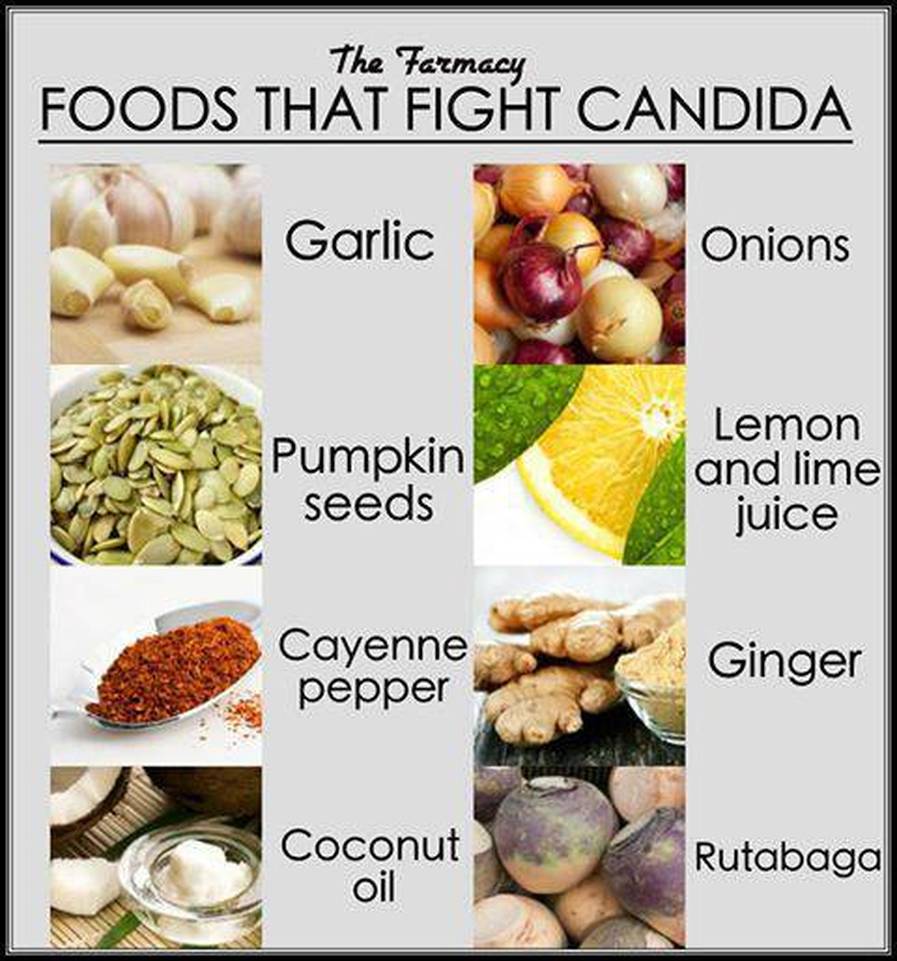
In a society addicted to sugars, grains, dairy and alcohol, nicotine, fast foods it becomes very difficult to treat the widespread digestive diseases occurring in North America. Add in a tainted and low nutrient food supply; antibiotics and prescriptions; heavy metal intake through dental fillings, vaccinations and environment; and plenty of undue stress and you have created the perfect environment for an inner ecology imbalance commonly known as candidiasis. However, there is hope to win the battle by incorporating these powerful foods into your diet on a daily basis.
Avoiding nicotine, antibiotics, birth control pills, heavy metals, sugars, grains, processed/fast foods, dairy and alcohol would be the first thing to consider here.
Fermented vegetables
In a war being won by pathogenic bacteria, you need to build up your friendly bacteria in order to start taking control of your internal ecosystem so that a proper balance can be maintained. A superior way to do this is through the consumption of fermented vegetables.
Fermented vegetables were a popular way to preserve food for long period of time, but have since become more popular for being an exceptional source of probiotics, enzymes, vitamins, minerals, and a way to eliminate toxins, rejuvenate your cells, and strengthen your immune system.
In short, fermented vegetables are a great way to redevelop your inner terrain and create the thriving bacteria required to control and heal a candida overgrowth.
Water Kefir
Water kefir has received credit as being a staple to helping heal candida infections.
Not only does it introduce beneficial probiotics to your intestinal system, it also helps strip the mucosal layer (often caused by prescriptions) that often prevents the absorption of good bacteria and other life promoting nutrients and lays down a mucosal layer that is more beneficial to the good bacteria.
Kombucha
Kombucha is also a highly recommended probiotic that will cure and prevent candida.
Apple cider vinegar
Apple cider vinegar is rich in enzymes and helps to naturally regulate the presence of candida in the body. It is a rich source of probiotics, balances your pH, and also helps to strip away the unhealthy gut biofilm that houses all kinds of pathogenic bacteria and parasites and prevents your intestinal system from properly absorbing nutrients.
Garlic
Garlic is a proven antifungal and has been shown to be effective against candida. In a 1988 study, the growth of candida was found to be markedly inhibited by AGE (aqueous garlic extract). In another article, published by Huntington College of Health Sciences, research clearly showed that garlic has anti-candidal activity, inhibiting both the growth and function of Candida Albicans.
Coconut oil-Extra virgin-unrefined
Coconut oil is a very versatile fat that contains three different fatty acids (caprylic acid, capric acid, and lauric acid) that have all been found to be effective against candida.
Ginger
While not the most potent antifungal food, ginger is an excellent healing food, it's worth adding to this list.
Ginger root is used to treat a number of health problems including abdominal bloating, loss of appetite, coughing, nausea, vomiting, sore throat, fevers, diarrhea, arthritis and rheumatism, among many others.
The aroma of ginger is such a pleasant one, and to sip a cup of ginger tea for a sore throat or an upset stomach really feels like you’re taking something that has some “oomph!”
And it does indeed have “oomph”. Ginger contains volatile oils which give it its characteristic taste and aroma. The aromatic constituents in ginger include zingiberene and bisabolene, while the pungent constituents (which are probably responsible for the calming effects on nausea) are known as gingerols and shogaols.
Ginger is also used in many formulations to cleanse the liver, and has been used for thousands of years in various corners of the globe as a detoxifying remedy.
The liver is often overly toxic when dealing with an overgrowth of yeast in the body.
That alone gives ginger a place on the list of our best culinary (and medicinal) treatments for candida.
For those suffering from candida, the most important ingredient is caprylic acid. This potent antifungal kills candida yeast cells by interfering with their cell walls. Capric and lauric acid have similar effects, creating a dynamic combination of antifungal treatments that results in less likelihood of resistance.
Pungent Spices – Let’s talk curry. Especially Indian-style curries. The pungent spices found in curry blends are great detoxifiers , blood cleansers, and very helpful for repelling candida yeast! It's best to make your curry dishes at home, especially the Thai curries, which often have sugars added when you order them at the restaurant.
Some of the most potent antifungal pungent spices are asafoetida, ajwain seeds, cinnamon, cloves, and coriander (the essential oil found in the coriander leaves especially - also called cilantro).
Get into curries, enjoy those pungent spice blends, they’re some of the tastiest treatments for candida albicans.
There are plenty of other foods and herbs to consider in your anti-candida diet, including oregano oil, pau d'arco, aloe vera, and cloves. The key is to mix it up to stay ahead of the adapting candida, until you can create and maintain a proper intestinal flora balance, primarily through probiotics and enzyme rich foods.
Eating non-starchy vegetables starves the Candida of the sugar that feeds it. Buy vegetables fresh and eat them raw, steamed or grilled.
Avoid starchy vegetables such as sweet potatoes, potatoes, yams, corn, all winter squash, beets, peas, parsnips and beans. Olives are OK as long as they are not in distilled white vinegar.
Gluten free grains like Millet, Quinoa, Amaranth and Oats contain a high amount of fiber, excellent for keeping your digestive system moving and eliminating Candida toxins. Most products derived from this list are also OK - e.g. quinoa crackers, buckwheat flour. You can find these in the gluten-free section in health food stores.